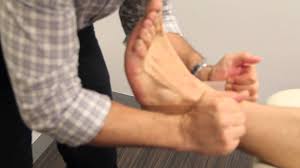|
BOOK NOW |
ASK ABOUT YOUR PAIN |
Home > Blog > Physio & Hand Therapy > Conditions We Treat > Tendon Pain Physiotherapy and Hand Therapy
Tendon Pain Physiotherapy and Hand Therapy

Tendon injuries
What are they and how do they happen?
Tendons can be found whenever muscles are, which is to say that we have tendons all over our body. Our tendons are really strong, rope-like structures that connects muscles to bones - they're really important to help us move, stand, jump etc.
And because tendons are involved in all things movement and resistance, they can be injured by
- direct trauma such as in falls or accidents
- repetitive strain due to daily use or frequent use
- disease
In this article, I'm gonna talk about pain and pathology in tendons and how we physiotherapists and hand therapists can help to heal injured tendons.
pain and pathology in tendons
The medical term of pain and pathology in a tendon is called "tendinopathy", and frankly it's a very common (even recurring) injury in both
- sporty / atheletic individuals
- "normal" and sedentary individuals
These tendon pains and injuries can be pretty tough to treat too, because they tend to come back and hang around. Typically, tendons can become tendinopathic when it is overloaded with pressure or weight more than usual or more than it can take.
Over time, if this tendinopathic tendon isn't treated, the tendon starts to change in structure resulting in pain and disability.
Tendons don’t like rapid change. A change in loading, whether that be an increase or decrease, may result in tendon pathology.
loads that can cause tendinopathy
- Compressive loads where the tendon is compressed against the bone
- Tensile loads where the tendon is loaded in a lengthened state
- A combination of tensile and compressive loads, for example stretching where the tendon is both lengthened and compressed against the bone
- Shearing loads, which cause a friction of a tendon within the tendon sheath (this only occurs in certain tendons)
tendon pain and injury treatment
physiotherapy and hand therapy

When there is a tendon injury or pain (tendinopathy), the patient should be treated with physiotherapy / hand therapy as soon as posisble.
Physiotherapy and hand therapy tendon rehabilitation process / stages:
- Stage 1: Pain relief and reduction by reducing the adverse loads on a tendon. Stretching should be ceased, as well as any other aggravating activities causing pain. Isometric (sustained holds) exercises are commenced to assist in providing pain relief
- Stage 2: Strengthening the tendon/muscle, while still avoiding adverse loads. Strengthening exercises should be performed slowly with reasonably heavy loads ie no pain whilst strengthening allowed.
- Stage 3: Exercises for power development to increase the energy storage capacity of the tendon, i.e. the ability to absorb load. These are generally higher speed exercises such as skipping and jumping.
- Stage 4: Sports-specific requirements of the tendon and the elastic function of the tendon (i.e. the ability to work in a lengthened position).
There is no quick fix for tendinopathy
One of the failures of a tendon rehabilitation program is skipping stages and not progressing through each of these stages of physiotherapy / hand therapy properly.
If a rehabilitation sage is progressed too early, the process will not
work. Taking painkillers or steroid injections may mask the pain for a while, but it doesn't treat the underlying core problem which is the tendon tendinopathy itself.
That will cause a reinjury and it's back to zero and starting over.
Of course, at the same time, we can't just stay at one stage forever / for extended period of time. It is very important to consult a physio or hand therapist that has an understanding of
- tendon loading,
- the rehabilitation process and
- the
progressions required to completely recover from a tendinopathy